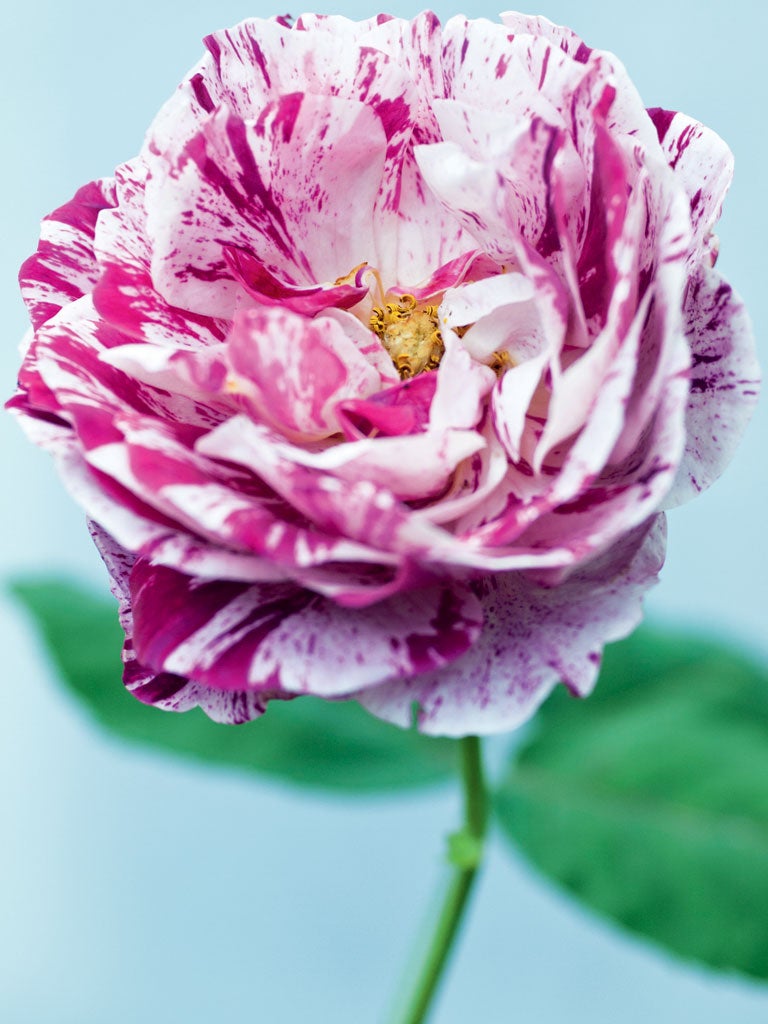The Independent's journalism is supported by our readers. When you purchase through links on our site, we may earn commission.
A rose by any other name: 'Little White Pet' or 'Belle de Teheran'?
Emma Townshend knows which one she prefers, even though they’re exactly the same flower...

Your support helps us to tell the story
From reproductive rights to climate change to Big Tech, The Independent is on the ground when the story is developing. Whether it's investigating the financials of Elon Musk's pro-Trump PAC or producing our latest documentary, 'The A Word', which shines a light on the American women fighting for reproductive rights, we know how important it is to parse out the facts from the messaging.
At such a critical moment in US history, we need reporters on the ground. Your donation allows us to keep sending journalists to speak to both sides of the story.
The Independent is trusted by Americans across the entire political spectrum. And unlike many other quality news outlets, we choose not to lock Americans out of our reporting and analysis with paywalls. We believe quality journalism should be available to everyone, paid for by those who can afford it.
Your support makes all the difference.Here's a dilemma: would you rather plant a rose called "Little White Pet" or one called "Belle de Teheran"? I don't feel there's much competition here. I'm plumping for the one that evokes beautiful old-world Iran, with long suppers eaten on terraces overlooking the city, and the sound of Farsi being spoken. "Little White Pet", on the other hand, sounds like something nasty out of Enid Blyton. Or a slightly weird Manga character who turns out to have vicious tendencies.
The truth, is, though, that these two small white roses are actually one and the same. It's pretty standard practice among breeders for roses to be named more than once, especially in different countries, and this particular variety is just unfortunate in having two such contrastingly different handles. And believe me, it makes me feel quite superficial that I actually care which my plant is called.
As we know from Shakespeare, the name may change but the perfume should remain the same. Yet names really do make a difference. I'd prefer "La Belle Marseillaise" to "Fellemberg", "Spring Morning" to "Frühlingsmorgen", and I'd definitely purchase "Gloire des Rosomanes" over "Ragged Robin".
For me, the names have a kind of enchantment, conjuring up the long and magical history of roses – a history that's beautifully captured in a new book by Clare Foster, Painterly Plants (Merrell, £25), which tells the stories of 14 of our most seductive garden flowers, alongside absolutely perfect pictures. And for me, the book serves as a reminder that the reason to fall in love with those old names is that they evoke a quieter time, of monastery gardens, French rose fields and the tables of old Tehran.
Garden roses date at least to the time of the Cretans, where just a single image of a rose survives in a Knossos palace on a fresco dated to 1,000 years before Christ. These flowers were probably domesticated varieties of Rosa gallica, the wild species that still grows in hedgerows and wastelands throughout southern Europe, and it's still possible to grow such plants in your own garden.
One of the loveliest is the medieval Rosa mundi, Rose of the World (which also goes by the far less interesting name of Versicolor). It offers sumptuous streaks of deep pink and white on a flower that's straight off a 14th-century tapestry – though it will cost you a very modern £18.95, pot-grown, from Peter Beales (classicroses.co.uk).
From all this it can be surmised that rose-breeding dates back pretty much as far as rose-growing itself. Some of the earliest varieties may have been accidents: one beautiful possibility illustrated by Foster is Complicata, probably a cross between a gallica and the native English dog rose. It has a pretty wildness that adds a touch of runaway-gypsy magic to any garden as it romps away over fences and hedges (£12.99, davidaustinroses.com).
It's only a matter of time, of course, before one begins to see the beauty of the wild species themselves. Some of them have to be seen in the flesh to be believed: Rosa rubrifolia has the most delicious purplish-grey leaves, with star-like pink flowers and bright-red hips in autumn, a delightful ensemble whose only downside is its enormous reach, growing out long arches of flowers over the course of the summer, which may delight you while horrifying the neighbours (£18.95, classicroses.co.uk).
Which illustrates perfectly that the only problem with these ancient roses is that they don't necessarily come up to modern standards of convenience. Some may flower only once; others are deeply prone to diseases we now know how to breed against.
Which is where the 20th-century rose-breeders come in. Foster is clear on their talents, pointing out how well they have worked to keep characters we love (such as old-rose fragrance) and incorporate others (such as repeat flowering). The epitome of all this industry and skill is one "Ferdinand Pichard", which has the beautiful medieval stripiness of Rosa mundi, but all summer long. Crocus.co.uk has Ferdinand for £12.99 at the moment: a bargain. And with a name like that, how can you possibly resist?
Claire Foster's favourites
ROSA ‘BALLERINA’
A smallish rose whose pink blooms form in clusters like tiny bouquets. £18.95, classicroses.co.uk
ROSE ‘SCEPTER’D ISLE’
Great big baby-pink bowls of petals that look almost like peonies. (Just don’t call it “Ausland”, its original name; it makes me think of the supermarket.) £14.50 for autumn delivery, davidaustinroses.com
ROSA ‘WILLIAM LOBB’
OK, we fall down on the name here. But this is one of the best moss roses, with utterly old-fashioned glamour. £13.49 (currently on sale), crocus.co.uk
Join our commenting forum
Join thought-provoking conversations, follow other Independent readers and see their replies
Comments